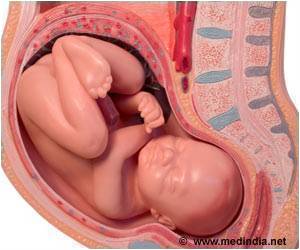Highlights
- Reduced fetal size during gestation affects the respiratory well-being of children aged 5 to 15 years.
- Fetal sizes were determined using ultrasound during first and second trimesters of pregnancy.
- Asthma and lung function were assessed at 5, 10 and 15 years of age in children.
- Larger fetuses were at reduced risk for asthma and had better lung function and persistent asthma and reduced lung function was associated with smaller fetal sizes.
The present research associates reduced fetal size with reduced lung function and persistent asthma from ages 5 to 15 years.
For the study, 2000 mothers from an antenatal clinic in Aberdeen were recruited, between the years 1997 and 1999. The fetal size during the first and second trimester was ascertained by routine ultrasound scan. Asthma status and lung function were determined at ages 5, 10 and 15 years. Then various models and statistical techniques were applied to the data.
The results showed that larger fetuses were at reduced risk for asthma and had better lung function. Fetal size was expressed as a z-score, which is a statistical method of expressing difference from normal; four z scores cover the range from abnormally small to abnormally large.
In the first trimester with increase in each z score, an overall reduction of risk for asthma between ages 5, 10 and 15 (OR 0.78) by 22% was seen, a result which applied even after adjustment for confounding factors.
Dr. Turner concludes "First trimester fetal size - a surrogate for fetal lung size - is relevant to symptoms and respiratory physiology through to 15 years of age. These findings suggest that antenatal factors contribute to life-long respiratory well-being." He adds "What we need to do now is first replicate these findings in other cohorts and then work out whether it is fetuses which start off small and stay small who have the worst outcomes or whether it is those that start off normal size (before 10 weeks) and then become small who are in trouble. Ultimately, any intervention is going to boil down to mothers not smoking or drinking, having a balanced diet and taking regular exercise - but this is good incentive for a healthy maternal lifestyle!"














